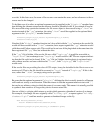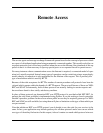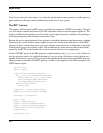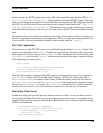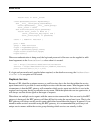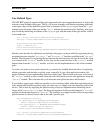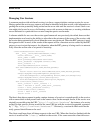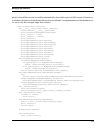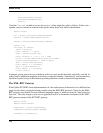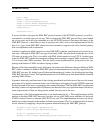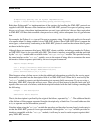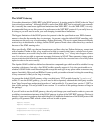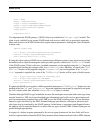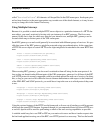
Remote Access
120
# Explicitly specify use of Python implementation.
rpcgw3 = netsvc.xmlrpc.RpcGateway(group,variant="python")
Both these Python and C++ implementations of the routines for handling the XML-RPC protocol are
supplied with OSE. Because of the limitations of the XML-RPC protocol in respect of passing a more
diverse set of types, when these implementations are used, types which don’t have a direct equivalent
in XML-RPC will have their encoded value passed as a string, with a subsequent loss of type informa-
tion.
For example, the Python None type will be sent as an empty string. Note this only applies to the result
of a request when it is being returned via an XML-RPC request. Since XML-RPC doesn’t support the
extra types, a client strictly conforming to the XML-RPC protocol would not have been able to gener-
ate them in the first place.
Although there are numerous third party XML-RPC clients available, including a number for Python,
an XML-RPC client is also provided with OSE. This client is interface compatible with that provided
by the "netrpc" module and is available in the "netrpc.xmlrpc" module. This provides exactly
the same interface as the "netrpc" module, even to the extent of being able to reconstruct the more
informative failure responses provided by the service agent framework.
import netrpc.xmlrpc
url = "http://localhost:8000/service/validator"
service = netrpc.xmlrpc.RemoteService(url)
print service.echo(1,1L,1.1,"1")
What happens when a failure occurs is that the additional information provided by the service agent
framework is encoded into the description field of an XML-RPC fault. When this is received by the
"xmlrpc" module it extracts out the information into separate fields once more. If you are using a
third party XML-RPC client this will not occur. What you will find instead is that the fault code will
equate to the error code of a failure, with the description included with the fault looking something like
the following.
origin -- the description
additional fault details
That is, the description is prefixed by the origin of the failure, separated by "--". The additional details
of the failure will then appear separated from the description by a blank line. You could either use this
as is, or separate out the information yourself.
Note that when using the "xmlrpc" module the encoders and decoders become largely irrelevant giv-
en that the XML-RPC protocol is not type extendable. Although the "xmlrpc" module provides an
interface compatible with the "netrpc" module, it still may be used to make requests against third
party XML-RPC servers.



